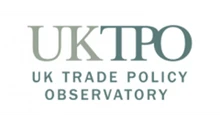Global agriculture has been hit by US tariffs on goods exports. Farmers in the United States now face diminished access to international markets, while many people in developing countries are at greater risk of food insecurity as prices for grain and fertiliser rise.
Agriculture is one of many global industries affected by increased US protectionism under the second Trump administration. On 31 July 2025, the president signed a significant executive order, which further modified the existing reciprocal tariff rates for several countries. These measures, which came into force on 7 August, affect over 60 countries. The order establishes a baseline tariff rate of 10% for US goods imports, and implements reciprocal rates that can rise to 50% for nations with which the United States has substantial trade deficits.
Since the start of the year, trade partners around the world have been scrambling to secure ‘deals’ with the Trump administration in order to soften the economic blow of his unorthodox policies. The European Union (EU) and the UK have each reached late-stage framework deals with the White House, establishing their tariffs at a more modest 15% and 10%, respectively.
In contrast, many other major economies – particularly global grain giants like Brazil (50%), Canada (35%) and India (25%) – now face significantly higher tariffs on exports to the United States.
Who feeds the world’s grain markets?
The world’s major grain-producing nations are currently at the epicentre of trade disruptions. Global grain trade is highly interdependent, making it essential for policy-makers and researchers to understand where grain production is concentrated in order to assess the impacts of the Trump tariff regime.
For example, in the 2024/25 agricultural season, China led global wheat production, with 140 million metric tonnes. It was followed by the EU with 122 million metric tonnes, and then India with 113 million metric tonnes. While much of the wheat produced in China and India is for their domestic markets, this situation underscores the crucial role of export-oriented producers, such as Australia, Canada the EU, Russia and the United States, in ensuring global food security.
Figure 1: Top seven wheat-producing countries and their exports, 2024/25
Source: US Department of Agriculture (July 2025)
The United States is the leading producer of corn (or maize), generating 378 million metric tonnes this past season. China followed with 295 million tonnes, while Brazil produced 132 million tonnes. The US leadership in corn exports underscores the significant impact of the Trump tariffs on the stability of global feed grain markets. Hence, any shifts in its trade policies ripple through international prices.
Figure 2: Top seven maize-producing countries and their exports, 2024/25
Source: US Department of Agriculture (July 2025)
The concentration of grain production among a relatively small number of countries amplifies the systemic risks associated with trade barriers. When major exporters such as the United States implement protectionist policies, alternative suppliers cannot easily absorb the displaced demand. This can lead to increased price volatility and supply shortages. For a commodity as essential to daily sustenance as grain, this is a worrying situation.
Are US tariffs disrupting markets?
One consequence of tariffs is the potential for increased market volatility. The immediate reaction to the ‘Liberation Day’ announcement on 2 April highlights the fragile nature of agricultural commodity pricing within the global economy. For example, the World Bank reported that global maize prices rose by approximately 4% month-on-month in April, right after the US policy announcement. Such volatility makes it difficult for farmers to manage price risks and plan their production decisions effectively.
The global response to the Trump tariffs has been swift, creating a cycle of retaliation that could significantly affect global agricultural trade. For example, China, the world's largest agricultural importer, has imposed tariffs of 10-15% on US wheat, corn and soybeans.
Who is likely to suffers the most from US tariffs?
The humanitarian consequences of the Trump tariff policies extend well beyond trade statistics, threatening food security for hundreds of millions of people living in developing countries. The global food system's heavy reliance on a small number of major exporters makes developing nations particularly vulnerable to trade disruptions.
For example, the sub-Saharan Africa region has an import dependency of 85% for wheat, and ‘small island states’ like Kiribati and Tuvalu rely on imports for over 80% of their total food supply. The Middle East and North Africa (MENA) region is also heavily reliant on food imports, with approximately 75% of food products coming from abroad.
Collectively, these areas contain the highest number of food-insecure people worldwide. These individuals allocate between 50% and 70% of their incomes to food expenses. Price increases can be deadly for those on the living on the breadline.
The impact of tariff-induced volatility on price transmission is both immediate and significant in developing countries. Research indicates that a 7% increase in international grain prices corresponds to similar increases in local food prices within sub-Saharan Africa. For households living below the World Bank's poverty line of $2.15 per day, such price increases can have devastating consequences.
Beyond grain: the wider impact of US tariffs
The Trump tariffs also pose additional risks to food security through their impact on fertiliser markets. Canada supplies up to 85% of US fertiliser. This makes the 35% tariff on Canadian goods especially challenging for American farmers.
The disruption in the global fertiliser market is affecting countries beyond North America. Developing countries such as Nigeria rely heavily on fertiliser imports to maintain their agricultural productivity. An increase in tariffs raises fertiliser costs, which reverberate through global supply chains and ultimately decrease crop yields in food-insecure regions. Lower yields can then drive up local prices further, punishing lower-income people.
The new suite of US tariffs has reshaped the global grain market. While the EU and the UK have secured a partial reprieve, other major producers and consumers are facing new challenging realities. American farmers risk losing established markets unless a timely trade agreement is reached with other countries. Meanwhile, Argentina, Brazil and countries in the Black Sea region seem poised to capitalise on the current situation if it remains unchanged, as importers seeking alternatives suppliers may turn to them for more competitively priced corn and wheat.
For developing nations, the most pressing concerns include rising food inflation and import bills, shortages of agricultural inputs (especially fertiliser) and the escalating threat of hunger. Decisions made in Washington affect farmers and families in all corners of the world – policy-makers must remain vigilant to further developments and do their utmost to protect people from further price volatility.
Where can I find out more?
- The US Department of Agriculture document outlines grain market trends before and after the Trump tariffs.
- BBC World Service has created a podcast exploring how the Trump tariffs affect business owners in the United States and around the world.
- The impact of trade and tariffs on the United States: Article from the Tax Foundation on the economic effects of tariffs in the United States.









































